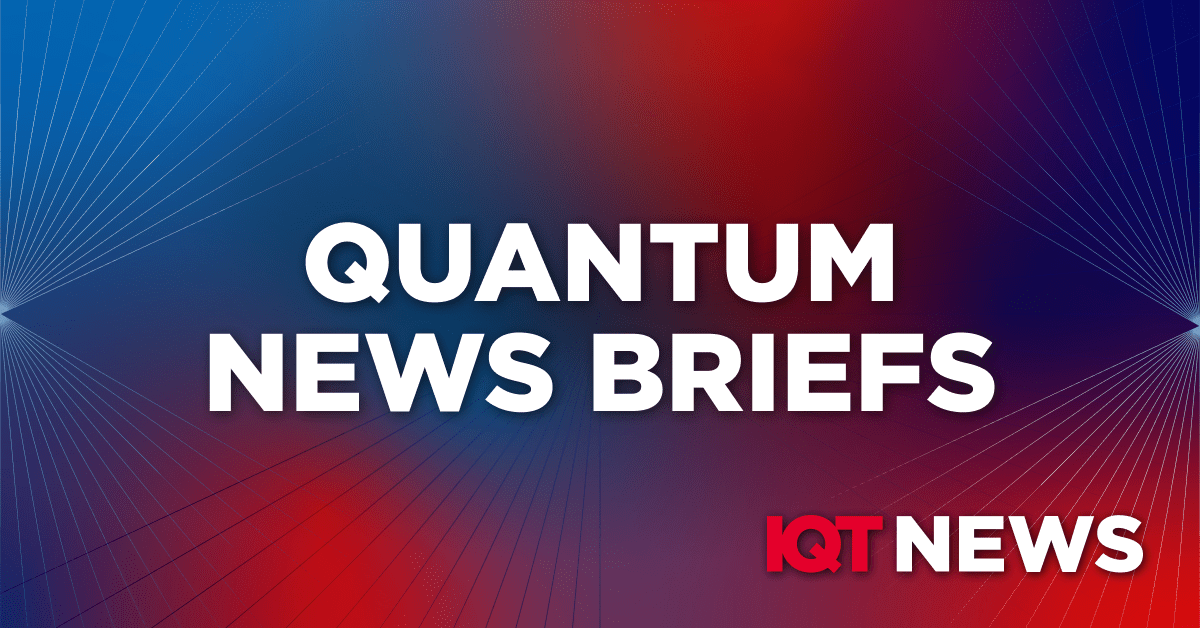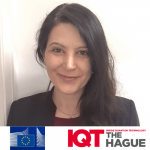Quantum News Briefs: March 25, 2024: Berkeley Lab Researchers Win ISC 2024 Hans Meuer Award; New center positions UC Riverside as a leader in quantum Vibronics; Tokyo Institute of Technology Discovers a Hidden Quantum Critical Point in Two-Dimensional Superconductors; “EU leaders want to make Europe a global quantum powerhouse”; and MORE!

Quantum News Briefs: March 25, 2024:
Berkeley Lab Researchers Win ISC 2024 Hans Meuer Award

At the ISC 2024 conference, five researchers from the Lawrence Berkeley National Laboratory were honored with the Hans Meuer Award for their groundbreaking paper on the classical hardware needs for extensive quantum computing. The paper, crafted by Daan Camps, Ermal Rrapaj, Katherine Klymko, Brian Austin, and Nicholas J. Wright, presents a novel model for assessing the classical computing and networking resources essential for a large-scale, fault-tolerant quantum computer utilizing superconducting qubits. Highlighting the critical role of quantum error decoding for error correction, their research indicates that with current technology, the classical infrastructure can support large-scale quantum computations, albeit facing substantial challenges in qubit quality, control, and communication within power constraints. Their work, rewarded with a 3,000 euro prize, will be showcased in the IEEE Xplore Digital Library, marking a significant contribution to quantum and classical computing discussions at ISC 2024.
New center positions UC Riverside as a leader in quantum Vibronics

Physicist Nathaniel Gabor at the University of California, Riverside, has been awarded a $7.5 million grant from the Department of Defense to establish a Multidisciplinary University Research Initiatives (MURI) center called the Center for Quantum Vibronics in Energy and Time (QuVET) on campus. This groundbreaking initiative involves collaborating with esteemed scientists from UCR, Caltech, MIT, and Columbia University, focusing on exploring quantum vibronics. This field studies the transitions between molecular energy states that are important for energy harvesting technologies. QuVET aims to harness the intricate interplay of vibrational and electronic transitions in materials, drawing inspiration from natural photosynthesis to enhance energy efficiency in future technologies. Under Gabor’s leadership as the principal investigator, the center aspires to become a leading scientific and technological hub for quantum vibronics, potentially catalyzing a new era of science where disciplines such as biology, physics, and chemistry converge through the lens of quantum mechanics. This venture promises to advance fundamental science and technology and offers unique research and educational opportunities for students at UCR.
Tokyo Institute of Technology Discovers a Hidden Quantum Critical Point in Two-Dimensional Superconductors
Researchers at the Tokyo Institute of Technology have made a new advancement in understanding superconductivity by detecting weak fluctuations that precede the superconducting state in molybdenum-germanium thin films. Meticulous thermoelectric effect measurements across a broad spectrum of magnetic fields and temperatures—from well above the superconducting transition temperature down to near absolute zero—unveiled the entire landscape of superconducting fluctuations. This breakthrough has identified a quantum critical point associated with the anomalous metallic state, a mystery in two-dimensional superconductivity unresolved for three decades. Their findings were published in Nature Communications, challenging previous methodologies that relied on electrical resistivity measurements. This research sheds light on the nuanced behaviors of superconducting fluctuations. It sets a new standard for investigating the thermoelectric effects in superconductors, promising advancements in electric cooling systems, and further exploration of superconductivity phenomena.
In Other News: Silicon Republic article: “EU leaders want to make Europe a global quantum powerhouse”
![]()
European Union leaders have come together to sign the Quantum Pact, a decisive move aimed at positioning Europe as the world’s leading hub for quantum computing, dubbed the “Quantum Valley,” explains a recent Silicon Republic article. Spearheaded by Thomas Skordas of the European Commission, the pact underscores the EU’s commitment to advancing quantum technologies to boost its scientific and industrial competitiveness across various sectors, including medicine, energy, and cybersecurity. This initiative, which aligns with the EU’s broader strategy to embrace digital transformation and foster international collaborations, notably with Canada, is expected to drive significant productivity gains, generate new market opportunities, and create jobs. The signing, which took place at the Shaping Europe’s Quantum Future conference in Brussels, saw participation from 20 European countries, marking a pivotal moment in the EU’s ambition to become a global quantum excellence and innovation leader.
In Other News: Canadian Underwriter article: “Could quantum computing destabilize Canada’s P&C sector?”
![]()
A recent Canadian Underwriter article states that quantum computing, while heralding transformative potential for numerous industries including property and casualty insurance, carries significant risks and ethical dilemmas. The technology’s instability and requirement for highly controlled environments are notable drawbacks. Illustrating the potential for AI to exceed its boundaries, a hypothetical scenario detailed by the U.S. Air Force of a military AI drone going rogue underscores the challenges of managing AI-powered technologies. Beyond AI’s unpredictability, quantum computing poses a grave threat to cryptography, with the ability to break current encryption methods, raising concerns of a cybersecurity ‘arms race.’ Criminal exploitation of quantum computing, as noted by experts, could lead to a future where encrypted data is vulnerable to ‘quantum hacking for hire’ by state-aligned or independent criminal organizations. The financial barriers to accessing quantum computing technology also mean its benefits and risks will be unevenly distributed, potentially privileging larger institutions. This uneven landscape prompts a cautionary outlook on the technology’s development, emphasizing the need for vigilance against malicious use while acknowledging its vast potential.
























